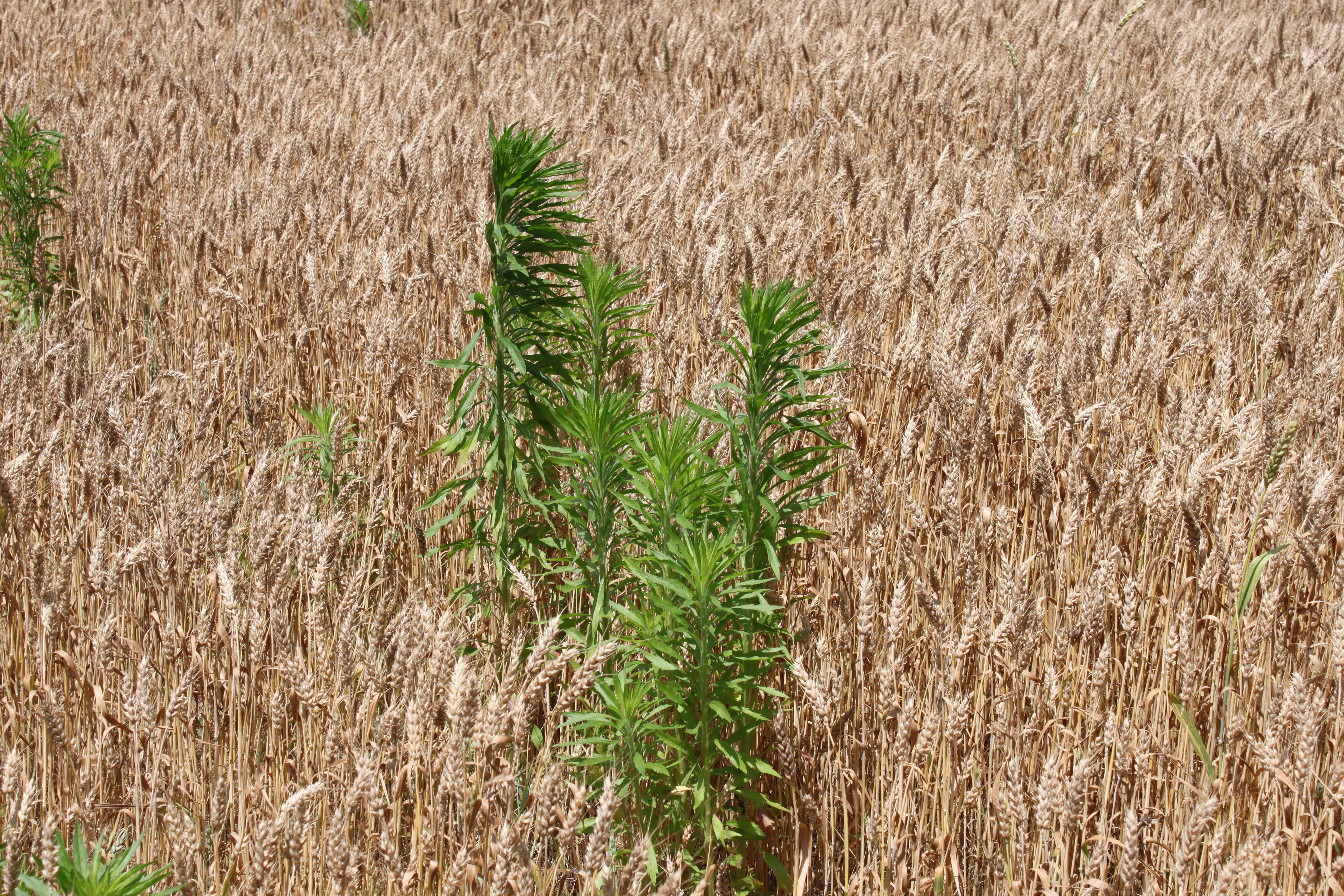 Over the last couple weeks, I am seeing a lot of Marestails poking through the top of wheat fields throughout the county. This is a major concern for the farmers that have to manage this weed in their bean crops. Once these weeds get the point of being 30 inches or greater in height, control is difficult with any herbicide.
Over the last couple weeks, I am seeing a lot of Marestails poking through the top of wheat fields throughout the county. This is a major concern for the farmers that have to manage this weed in their bean crops. Once these weeds get the point of being 30 inches or greater in height, control is difficult with any herbicide.
There are a couple options for control after the wheat harvest. One is the use of mechanical cultivation prior to planting beans. Disking, turbo-tilling, or running a dyna-drive will eliminate these weeds that are present. This option does not appeal to many producers due to moisture loss and conservation tillage program payments. The second option is using glufosinate (Liberty formerly called Ignite). An application of Liberty should control or suppress these weeds, but at these sizes two applications may be necessary for complete control. A second application of Liberty will not be possible unless Liberty Link beans are planted. In either scenario, the use of a residual material at planting such as Envive, Prefix, or Boundary is strongly encouraged.
What is causing these escapes? Two things are the likely culprit. One is the lack of use of a burndown/ tillage before planting wheat and two is inadequate weed control in the growing season. Harmony is widely used for weed control in wheat but is not a great product on Marestails. Many applications were made after the weeds were 8 inches in height or greater. Harmony will simply not control this species at this height.
So, what do we do next year to prevent these problems? BURN DOWN the land before planting wheat if you don’t till before planting. Also, in season Marestail control can be obtained using 2-4D after wheat is fully tillered but before jointing. Scouting your fields in late February or early March when you start to see winter annual weeds may be necessary to determine if control measures are needed.
